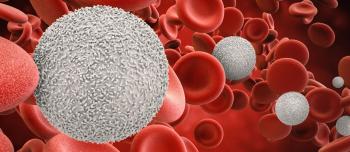Genentech, a member of the Roche Group, today announced that the U.S. Food and Drug Administration (FDA) has approved Hemlibra® for routine prophylaxis to prevent or reduce the frequency of bleeding episodes in adults and children, ages newborn and older, with hemophilia A without factor VIII inhibitors (FVIII). The therapy, which was co-developed by Genentech, Chugai and Roche, was already FDA approved in the fall of 2017 for routine prophylaxis to prevent or reduce the frequency of bleeding episodes in adults and children with hemophilia A with FVIII inhibitors.
Hemlibra® is a laboratory-engineered protein that works by performing a key function in the clotting cascade that is normally carried out by the FVIII protein, which is deficient in individuals with hemophilia A. The “cascade” is an intricate series of chemical and molecular reactions between clotting factors that lead to clot formation. In this case, Hemlibra® binds to and bridges two other key clotting proteins, activated factor IX and factor X, important components of the cascade normally performed by FVIII. Hemlibra® is also unique in its administration as the therapy is delivered subcutaneously through an injection just under the skin.
According to Genentech press release, this approval is based on positive results from the phase III HAVEN 3 and HAVEN 4 clinical studies in which Hemlibra® prophylaxis led to “statistically significant and clinically meaningful reductions” in treated bleeds compared to no prophylaxis.
“Many preventative treatment options for people with hemophilia A without factor VIII inhibitors require intravenous infusions several times a week. Even then, people can still experience bleeds, and there has been a need for more treatment options,” said Michael Callaghan, MD, hematologist, Children’s Hospital of Michigan. “The approval of Hemlibra is an important advancement for the entire hemophilia A community, as we now have a new class of medicine for the first time in nearly 20 years. Hemlibra can reduce bleeds, and it offers a new subcutaneous administration once weekly, every two weeks or every four weeks.”
Source: Genentech press release dated October 4, 2018





